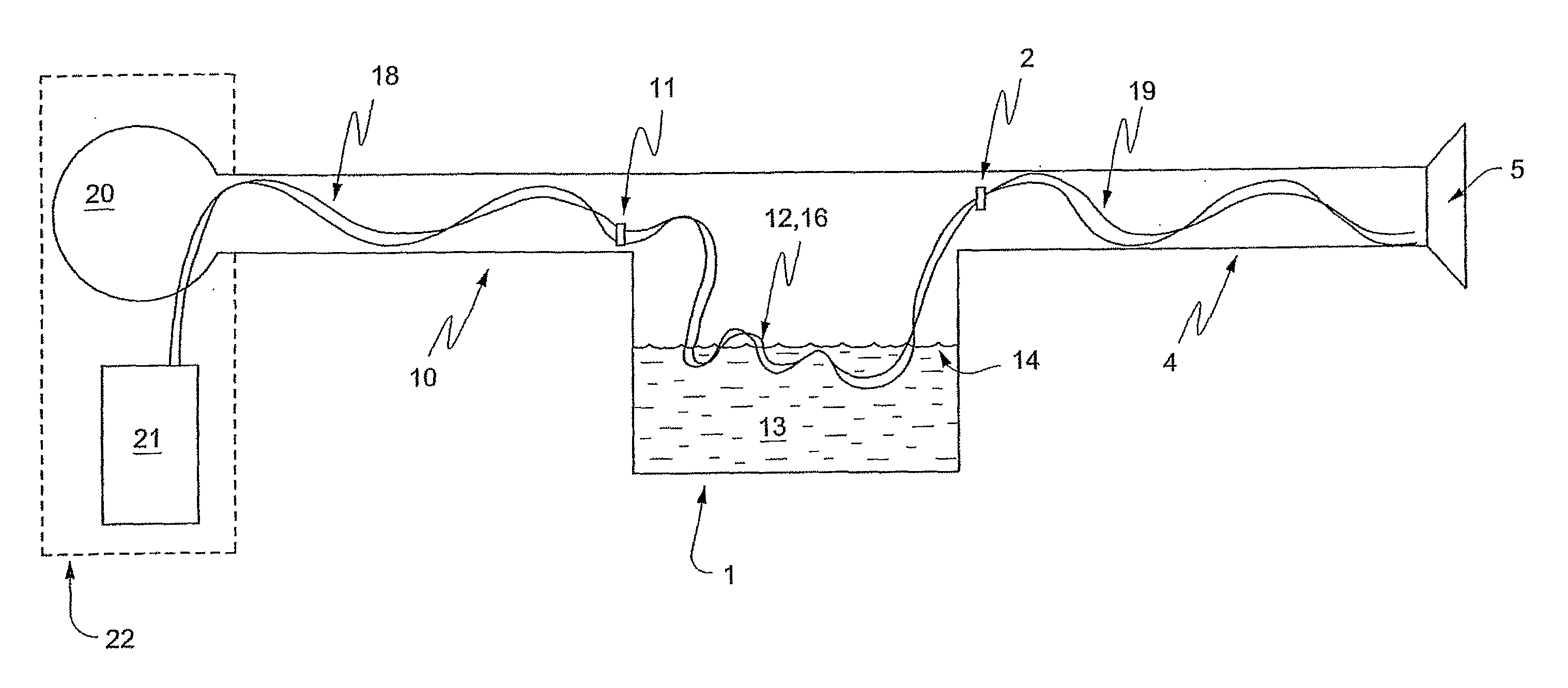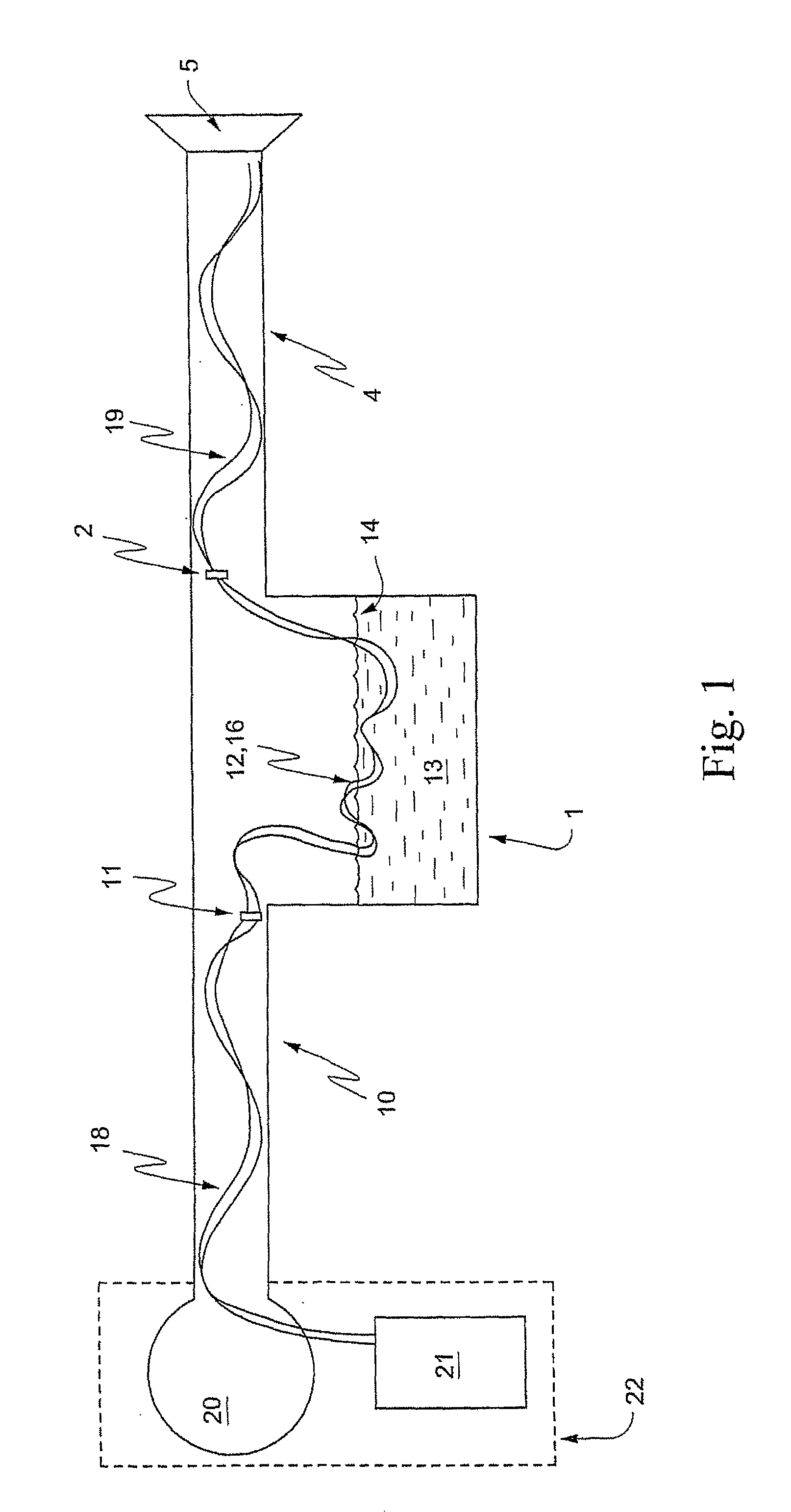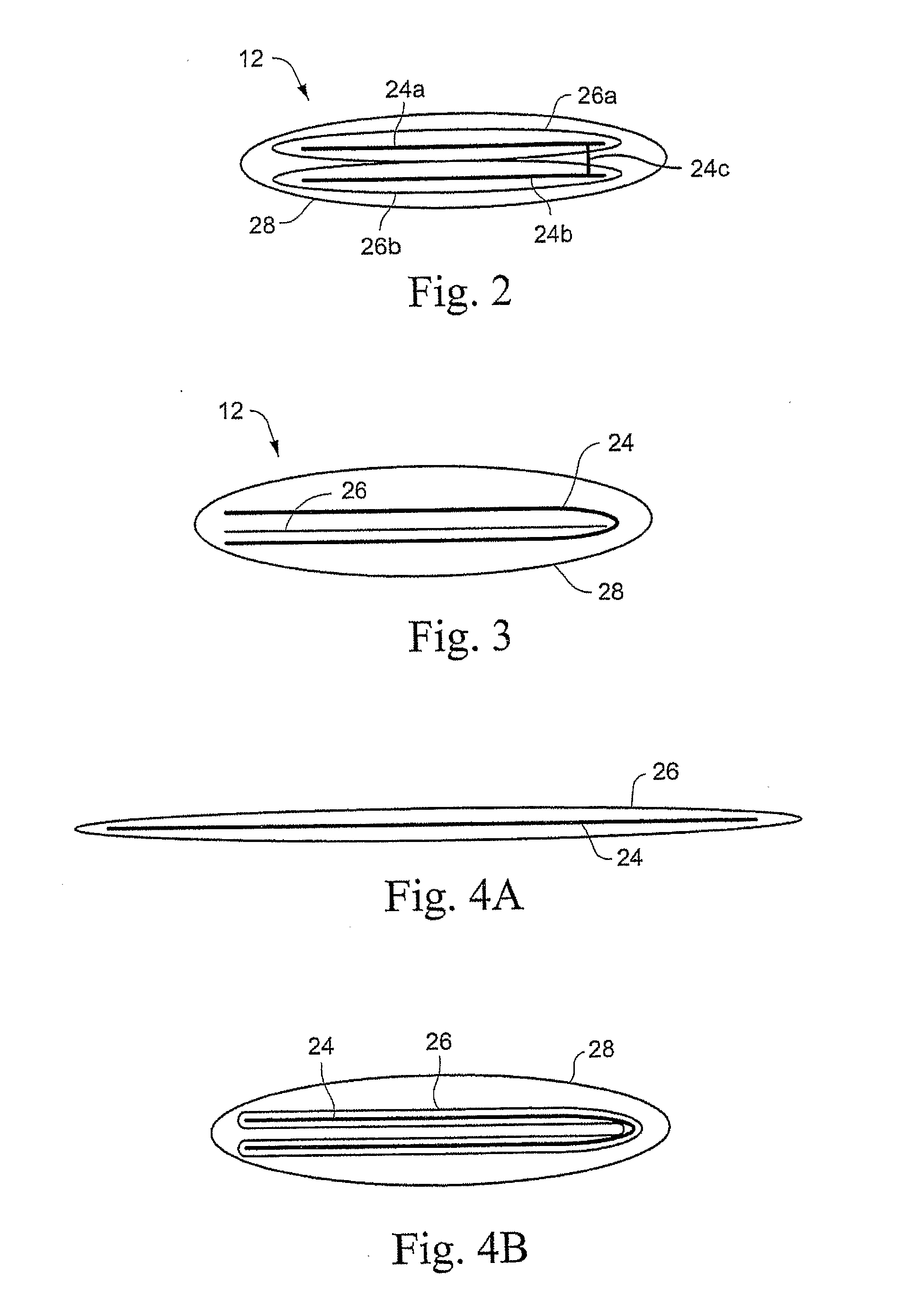Heating element, humidifier for respiratory apparatus including heating element, and respiratory apparatus
a technology of humidifier and heating element, which is applied in the direction of burners, combustion types, other medical devices, etc., can solve the problems of poor heat transfer, poor heat transfer, and poor method of patient condui
- Summary
- Abstract
- Description
- Claims
- Application Information
AI Technical Summary
Benefits of technology
Problems solved by technology
Method used
Image
Examples
first embodiment
[0045]Heating Element First Embodiment
[0046]As shown in FIG. 2, the heating element 12 may comprise two resistive ribbon wires 24a, 24b. An insulating layer 26a, 26b is provided around each resistive ribbon wire 24a, 24b to provide dielectric insulation between at least two sections of the resistive ribbon wires 24a, 24b. The insulating layers 26a, 26b may be optionally encapsulated in a protective outer layer 28 to provide waterproofing and electrical safety requirements. The resistive ribbon wires 24a, 24b are electrically connected by a connection 24c, for example a spot weld, to provide an electrical connection to complete the circuit. The two ends 24d, 24e (FIG. 6) of the resistive ribbon wires 24a, 24b are exposed by removing portions of the insulating layers 26a, 26b (FIG. 7). The two ends 24d, 24e of the resistive ribbon wires 24a, 24b are connected to the power supply and controller 21 to provide a complete electrical circuit.
second embodiment
[0047]Heating Element Second Embodiment
[0048]Referring to FIG. 3, in another sample embodiment, the heating element 12 is formed of a single length of resistive ribbon wire 24 that is bent in half. An insulating layer 26 is placed between the two halves of the bent resistive ribbon wire 24. The outer protective layer or coating 28 is then formed around the bent resistive ribbon wire 24, for example by shrink wrapping or dipping.
third embodiment
[0049]Heating Element Third Embodiment
[0050]Referring to FIGS. 4A and 4B, in another sample embodiment of the heating element, a single resistive ribbon wire 24 is coated with an insulating layer 26 and the resulting structure is folded in half and then coated again in a second insulating layer or protective outer layer 28 to form the heating element 12.
[0051]Heating Element and Delivery Conduit
[0052]As shown in FIG. 1 the heating element 12 may be incorporated within the inlet conduit 10 and / or the patient conduit 4. The heating element 12 may comprise different heating elements or zones. For example, as shown in FIG. 1, the heater element 12 may comprise a first heater element or zone 18 located in the inlet conduit 10, a second heater element or zone 16 located within the humidifier chamber 1, and a third heater element or zone 19 located in the patient conduit 4. Connectors 2, 11 provide the power and communication signals to each of the different heating elements or zones. Each...
PUM
 Login to View More
Login to View More Abstract
Description
Claims
Application Information
 Login to View More
Login to View More - R&D
- Intellectual Property
- Life Sciences
- Materials
- Tech Scout
- Unparalleled Data Quality
- Higher Quality Content
- 60% Fewer Hallucinations
Browse by: Latest US Patents, China's latest patents, Technical Efficacy Thesaurus, Application Domain, Technology Topic, Popular Technical Reports.
© 2025 PatSnap. All rights reserved.Legal|Privacy policy|Modern Slavery Act Transparency Statement|Sitemap|About US| Contact US: help@patsnap.com



